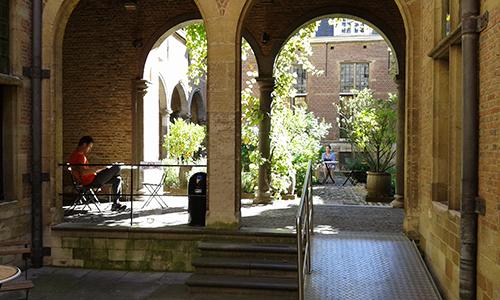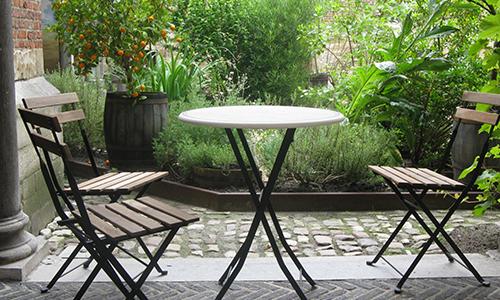Rockox’s garden
Nicholas Rockox’s little city garden was a jewel, a visual delight and a well-kept secret within its four walls. The garden of The Snijders&Rockox House is an evocation of what it might originally have looked like. Rockox died in December 1640 – a gloomy time of year – and the notary who drew up the inventory of his estate paid no attention to the garden, not even mentioning it. In the house’s cellar, by contrast, the notary recorded several small orange and laurel trees, which were being kept in that cool and dry place for the winter. Citrus trees, which were imported from Spain and Sicily, were just about the most expensive plants you could find in a 17th-century garden. But Rockox boasted even more exquisite plants than those. He was in frequent correspondence with the French humanist Nicolas-Claude Fabri de Peiresc, writing amongst other things about the delivery of plants from Aix-en-Provence in the South of France to Antwerp.
We know of two consignments, when 24 exotic plants and shrubs in tin boxes were shipped to Rockox in 1610 and 1611: an oleander, a storax, a sumac, a grapevine, an agave and many more besides. Rockox’s library also testified to his interest in nature. He owned no fewer than eight books on botany, including celebrated works by Dodoens and Clusius. There are no iconographical sources offering information about Rockox’s own garden, but we did find guidelines for laying out a city garden of this kind in Olivier de Serres’ Le Théâtre d’Agriculture, of which Rockox also had a copy on his bookshelf. In the summer, you can enjoy the garden’s cool shade. But a restless soul will also find tranquillity there in the winter.








